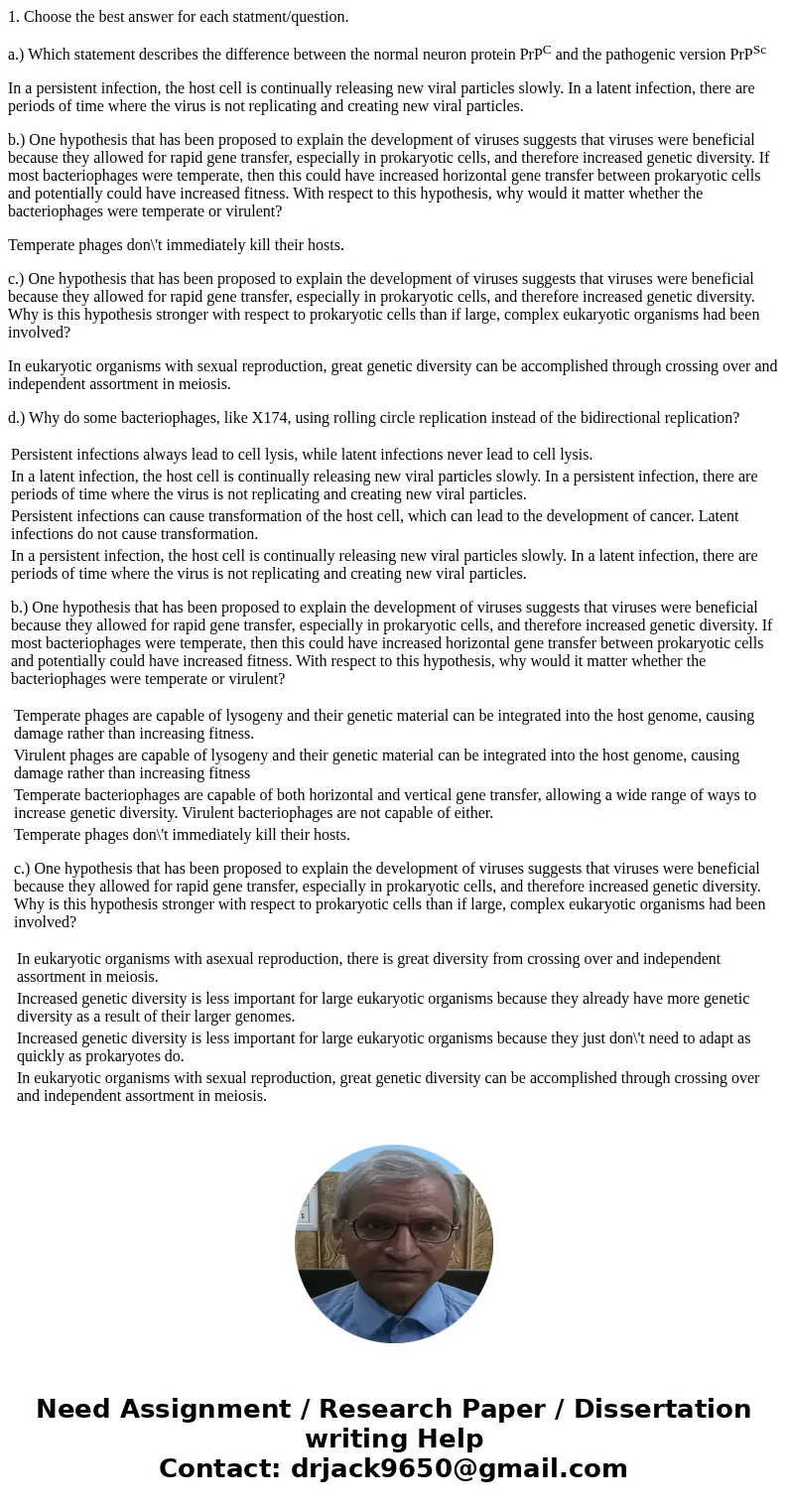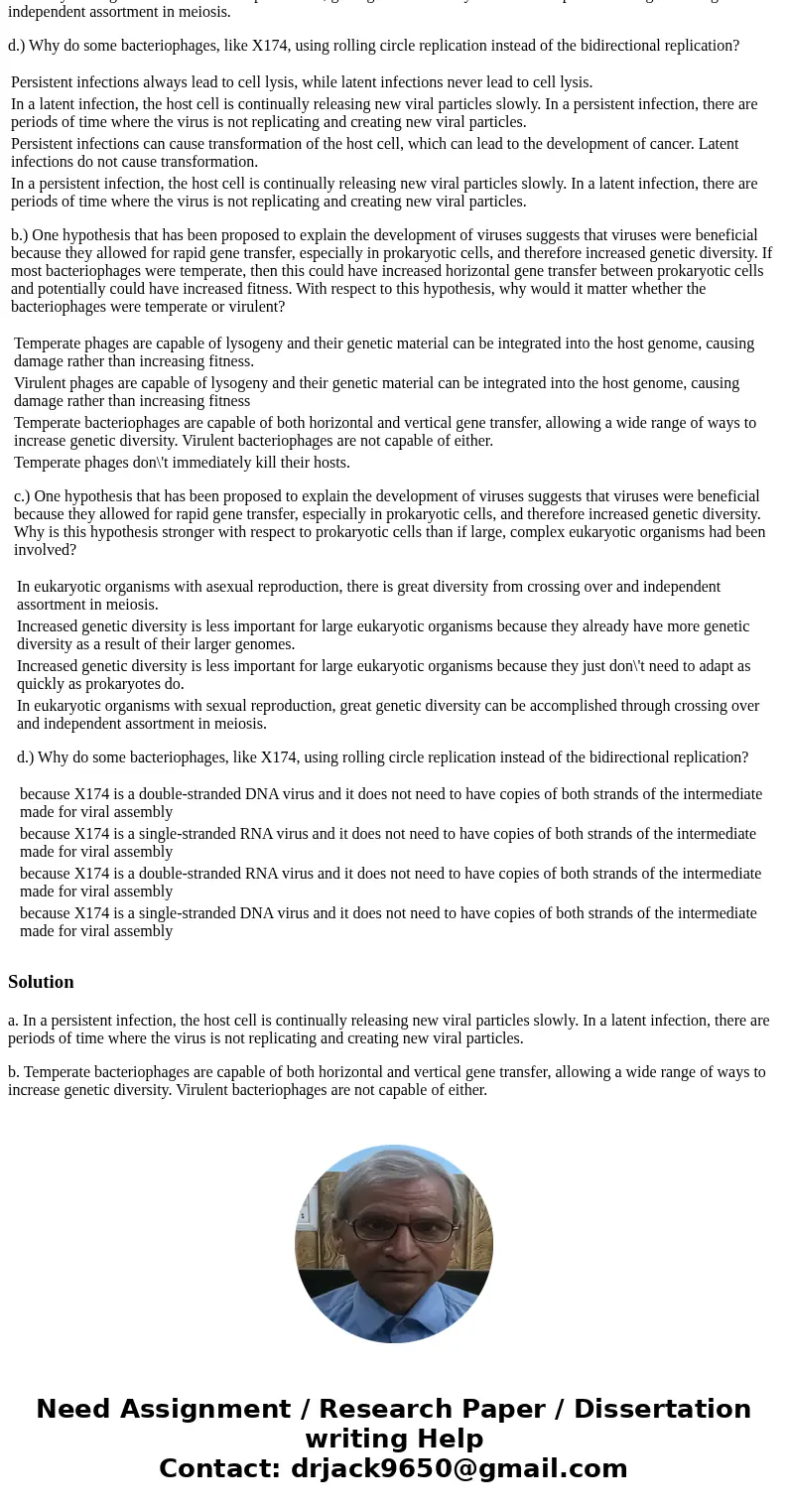1 Choose the best answer for each statmentquestion a Which s
1. Choose the best answer for each statment/question.
a.) Which statement describes the difference between the normal neuron protein PrPC and the pathogenic version PrPSc
In a persistent infection, the host cell is continually releasing new viral particles slowly. In a latent infection, there are periods of time where the virus is not replicating and creating new viral particles.
b.) One hypothesis that has been proposed to explain the development of viruses suggests that viruses were beneficial because they allowed for rapid gene transfer, especially in prokaryotic cells, and therefore increased genetic diversity. If most bacteriophages were temperate, then this could have increased horizontal gene transfer between prokaryotic cells and potentially could have increased fitness. With respect to this hypothesis, why would it matter whether the bacteriophages were temperate or virulent?
Temperate phages don\'t immediately kill their hosts.
c.) One hypothesis that has been proposed to explain the development of viruses suggests that viruses were beneficial because they allowed for rapid gene transfer, especially in prokaryotic cells, and therefore increased genetic diversity. Why is this hypothesis stronger with respect to prokaryotic cells than if large, complex eukaryotic organisms had been involved?
In eukaryotic organisms with sexual reproduction, great genetic diversity can be accomplished through crossing over and independent assortment in meiosis.
d.) Why do some bacteriophages, like X174, using rolling circle replication instead of the bidirectional replication?
| Persistent infections always lead to cell lysis, while latent infections never lead to cell lysis. | ||||||||||||
| In a latent infection, the host cell is continually releasing new viral particles slowly. In a persistent infection, there are periods of time where the virus is not replicating and creating new viral particles. | ||||||||||||
| Persistent infections can cause transformation of the host cell, which can lead to the development of cancer. Latent infections do not cause transformation. | ||||||||||||
| In a persistent infection, the host cell is continually releasing new viral particles slowly. In a latent infection, there are periods of time where the virus is not replicating and creating new viral particles. b.) One hypothesis that has been proposed to explain the development of viruses suggests that viruses were beneficial because they allowed for rapid gene transfer, especially in prokaryotic cells, and therefore increased genetic diversity. If most bacteriophages were temperate, then this could have increased horizontal gene transfer between prokaryotic cells and potentially could have increased fitness. With respect to this hypothesis, why would it matter whether the bacteriophages were temperate or virulent?
|
Solution
a. In a persistent infection, the host cell is continually releasing new viral particles slowly. In a latent infection, there are periods of time where the virus is not replicating and creating new viral particles.
b. Temperate bacteriophages are capable of both horizontal and vertical gene transfer, allowing a wide range of ways to increase genetic diversity. Virulent bacteriophages are not capable of either.


 Homework Sourse
Homework Sourse